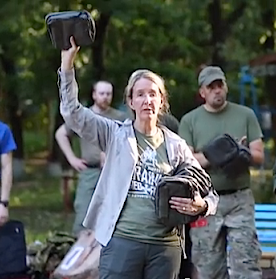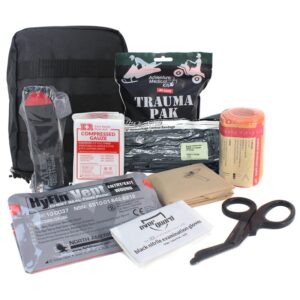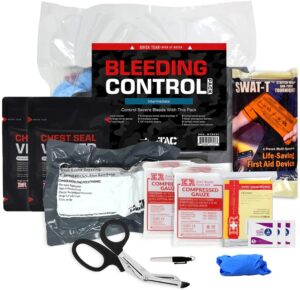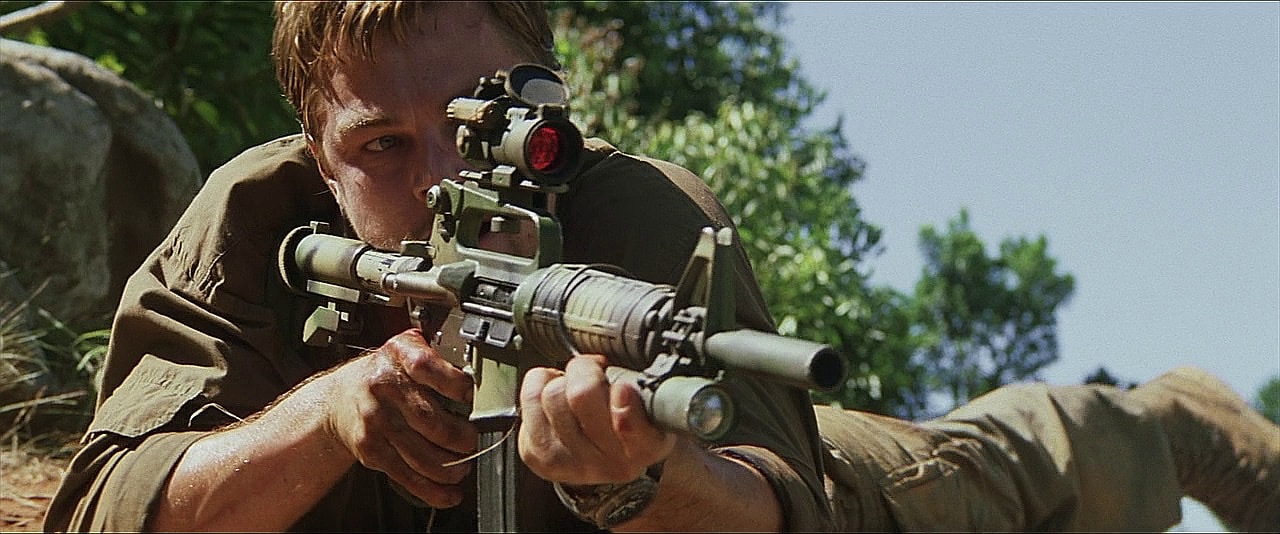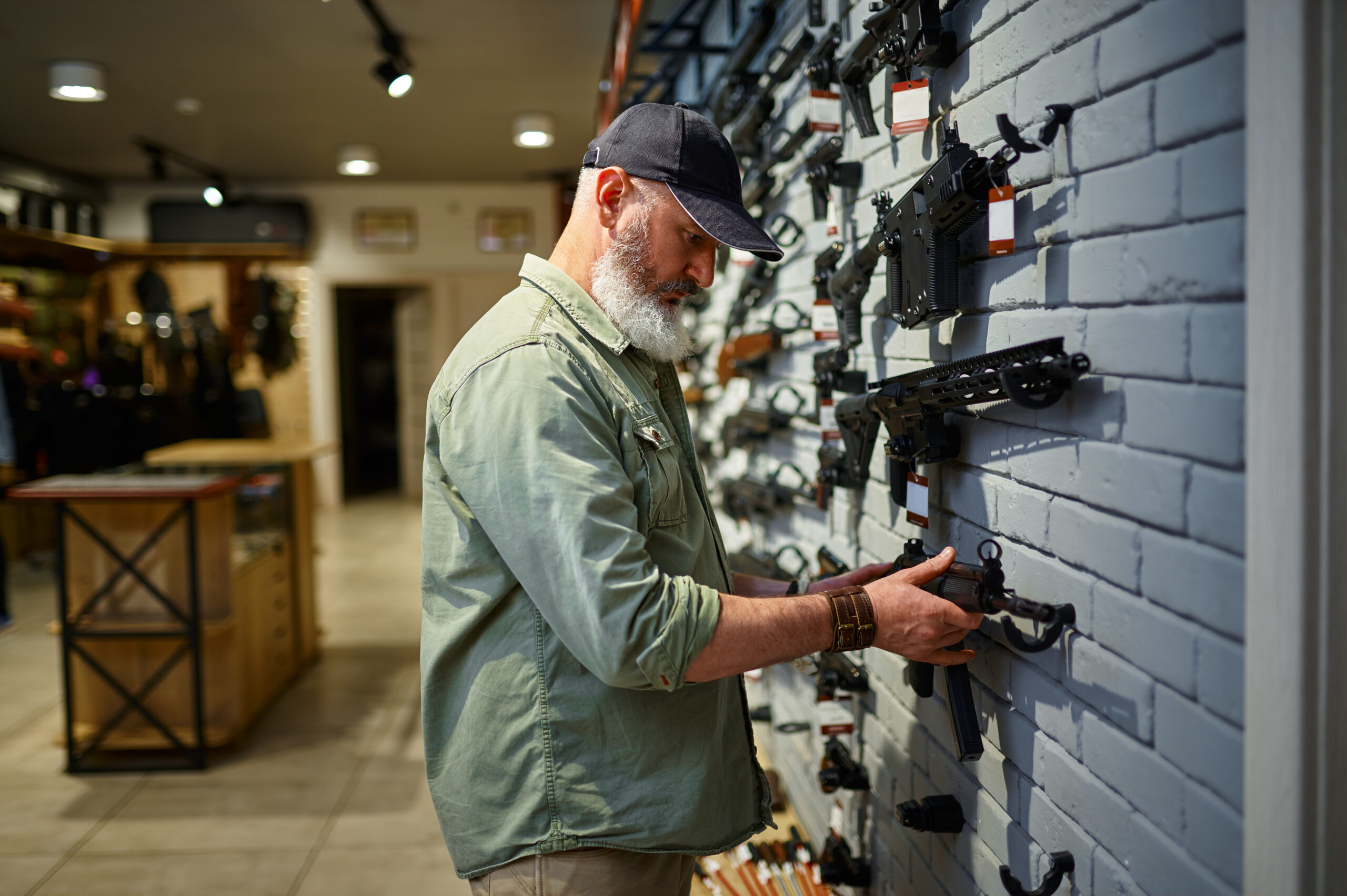If you’re reading this, you’re probably around firearms on a regular basis. You know they can cause injury, you practice gun safety, in short, you’re a responsible gun owner. No matter how cautious you are, accidents can happen. Maybe it’s not even your fault, someone else’s negligence leads to a catastrophic injury. Now what?
What Is An IFAK
An Individual First Aid Kit, or IFAK, can stabilize you until help arrives. An IFAK isn’t the typical first aid kit that you have around your house or in your car. It’s a small, simple kit that is designed with catastrophic injury in mind. It’s also designed to be used on you, in the case of your own injury. If you’re at the range and get injured, you’ve literally given anyone nearby the tools they need to keep you alive the few extra minutes until an ambulance arrives.
In police and military applications, every officer or soldier carries their own IFAK, so if they’re injured, one of their colleagues can use the injured party’s IFAK to stabilize them. In most civilian situations (like a car accident or shooting accident), your IFAK can save your life if someone uses it on you, but your IFAK can also save another’s life.
At its most basic, an IFAK will contain a pair of nitrile gloves (preferably in a light color because black gloves make seeing blood harder when doing a body check for bleeding), a tourniquet, hemostatic gauze, a pressure dressing, and a chest seal.
Proper training in how to use anything you put in your IFAK is also imperative. The items listed above are basic, and require pretty simple training to use, with an occasional refresher. Know how to apply a tourniquet, or what hemostatic dressing does (it’s treated to form a thick gel when in contact with blood that stops bleeding), learn how to pack a wound with gauze (wrap the empty gauze packet in the last 2 layers of bandage so ER personnel know what kind of gauze is packed in the wound), and carry two chest seals (where there’s an entrance wound, there might be an exit wound.) These are all pretty simple concepts that people with no medical experience at all can understand, allowing people of all ages to potentially help save a life.
What Should Go In My IFAK?
While it may seem counterintuitive, an IFAK needs to be kept as simple as possible, and only contain items that people around you will generally be trained to use. Studies of preventable combat deaths have shown that around 60% of those deaths were from extremity hemorrhage (bleeding out), and about 33% from a sucking chest wound (a wound that punctures the thorax, causing air to enter the chest cavity.) If your IFAK contains the few basics listed above, you’ve just given yourself a much better chance of staying stable until help arrives.
While a lot of people have an IFAK as part of their shooter’s bag, you really should consider keeping one around at all times. Cars and power tools are part of our daily lives, and they are just two examples of common things that can cause catastrophic injuries. If you have an IFAK nearby, you or someone near you can save your life.
If you’re engaged in a high-risk activity (like any kind of firearms training), having an IFAK isn’t only the responsible thing to do, it may be mandated by insurance or other regulations. Just imagine for a moment having a training accident and bleeding to death because you didn’t bother to spend a few dollars on an IFAK.
Depending on your situation, there might be specific things you’d want to add. If you’re working around heat and fire, perhaps extra non-stick bandages and tape to secure them. Consider your situation, and build your kit accordingly, but with simplicity in mind. You’re not trying to stabilize yourself for a hike down a mountain to safety, you’re just trying to keep yourself stable for a few minutes until help arrives. A good question to ask yourself is “what kinds of injuries are most likely to occur in my everyday routine?” Plan your IFAK contents from there.
What IFAK Should I Buy?
Buying the right IFAK can be daunting. There are dozens of different ones, at several price points. Just remember the adage “you get what you pay for.” On the cheap end, there are ones with the right equipment but of somewhat dubious quality. On the high end, there are ones that have the basics you need and then throw in a dozen other things you don’t want to have to dig through in an emergency. This kit isn’t supposed to contain band-aids or painkillers. It’s here to save a life, and less is more.
We recommend our partner MediTac®. The MediTac® Mission is to supply a line of tactical equipment and kits that are designed to meet the needs of technicians, the military, organizations, and civilians looking to treat and stabilize traumatic injuries when help may not be immediately available.
Whether patrolling, hiking, or going about a daily routine, you need to be able to rely on your equipment if an emergency should occur. MediTac® kits help enhance the safety, accuracy, and speed with which you can administer treatment.
MediTac® looks closely at the needs of their clients to provide the best tactical gear at the best available price, to give you peace of mind, and provide aid when you’re far from medical care. Add MediTac® kits and gear to all of your first aid supplies so you are prepared should an emergency occur.
Another aspect to consider is what kind of case you want for your IFAK. For everyday carry, you probably don’t want to be running around looking like a combat medic, and there are several great options to consider. Many good IFAK kits come in durable cases, about 6”x3”, meant to fit on the belt, thigh, or even ankle. When considering which is right for you, keep in mind that you want the kit accessible by either hand, in case one side is incapacitated, so keep it within easy reach.
The US Government learned so much from the wars in Afghanistan and Iraq, and takes the entire concept of stabilizing a bleeding patient so seriously that the Department of Defense has partnered with several other public and private organizations to create the STOP THE BLEED campaign, encouraging individuals from all walks of life to train in how to stop bleeding. In many cases, the basic gear found in an IFAK could be the deciding factor between keeping a patient alive until help arrives, or letting them bleed out. Having your own IFAK with you at all times gives a bystander the tools they need to potentially save your life.
Closing Thoughts
The IFAK comes down to personal responsibility. It should be part of your everyday carry gear, especially if you carry or are around firearms. It’s the cheapest form of life insurance you’ll encounter and the life you (or someone else saves) could be your own. That should be a pretty easy choice to make.

